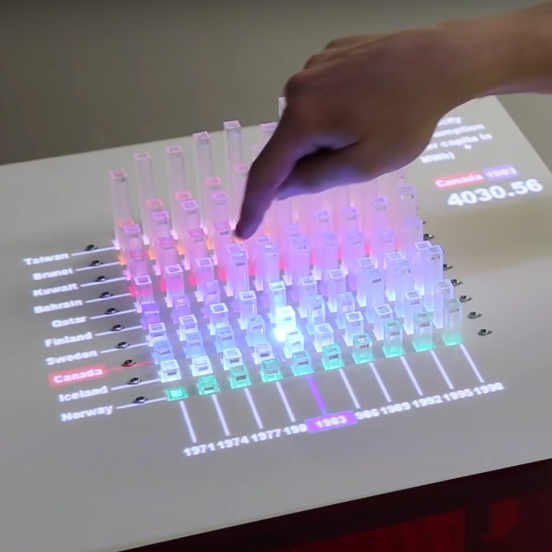Cubimorph investigates modular interactive devices. Such devices are capable of taking different shapes through repositioning of the modules and transforming from one complex 3D shape to another. Cubimorph solves a major human interaction challenge with modules that can accommodate touchscreens on each of the six module faces by using a double-hinged turntable mechanism. Cubimorph can self-reconfigure in the user's hand (e.g. from a bar-shaped phone to a game-controller). Cubimorph contributes toward the vision of programmable matter where interactive devices reconfigure into any shape that can be made out of a chain of cubes and perform a myriad of functions. We present a design rationale that exposes user requirements that matter while designing homogeneous modular interactive devices. We also demonstrate our Cubimorph mechanical design, three prototypes demonstrating key aspects (turntable hinges, embedded touchscreens and miniaturization), and an adaptation of the probabilistic roadmap algorithm for the reconfiguration. Read more about it here [].


Data physicalizations are physical data entities (converse to digital entities) that help people explore, understand, and communicate data. Data physicalizations are intended to physical representations of data with interactive capabilities supported by computers. These representations, physicalizations, are analogous to visualizations, their purely visual counterpart. This project looks into the emerging field of data physicalizations through different lenses of affordances, interactivity, capabilities and utility. Data physicalization has a wiki page here: [].
Morphees explores the concept of self-actuated flexible mobile devices. Such devices, in theory, could automatically adapt their shape to the context of use. For e.g. when a game is launched, the mobile device morphs into a console-like shape by curling two opposite edges to be better grasped with two hands. To describe the fidelity of these devices, we introduce the term shape resolution (similar to screen and touch resolution). We also propose a framework, based on NURBS, which defines a metric for shape resolution using ten features. Morphees are not purely theoretical constructs. We built preliminary prototypes of Morphees in order to explore six different building strategies using advanced shape changing materials (e.g. DEAP & SMAs). Read more about this project here: [].
